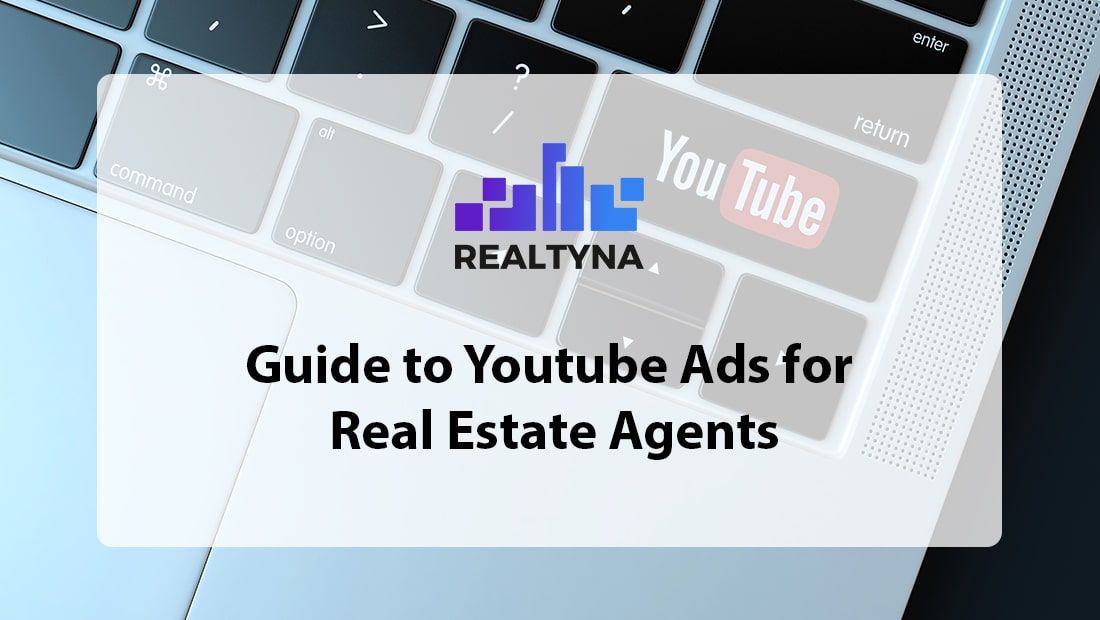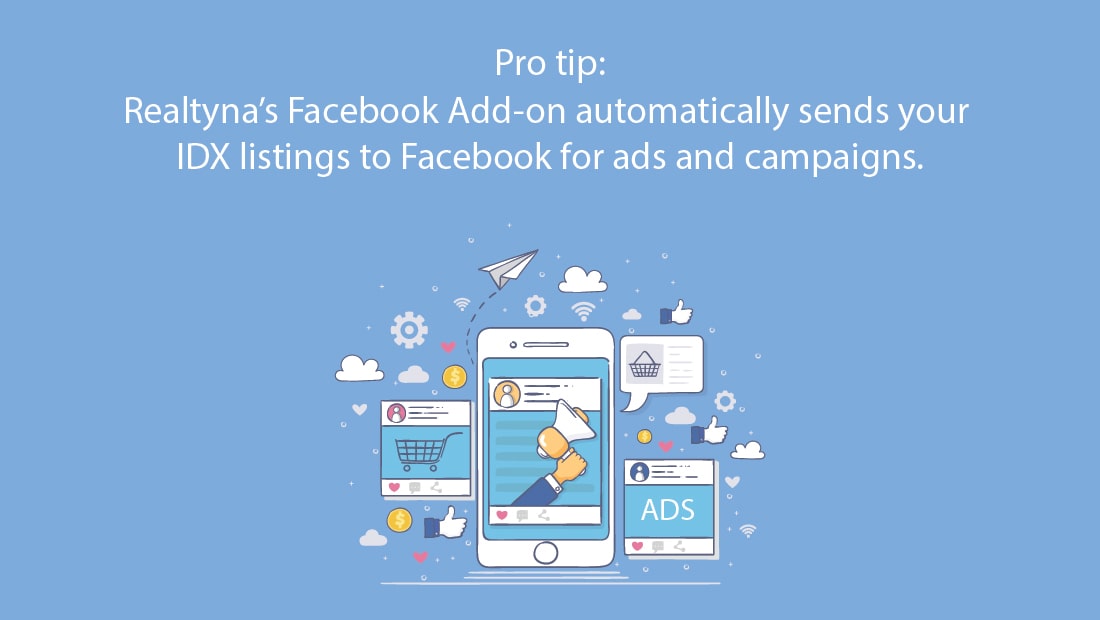
Guide to YouTube Ads for Real Estate Agents
Despite YouTube being one of the most successful and popular social media platforms, for real estate agents, it’s still a relatively untapped territory. Of course, many real estate agents have a YouTube presence but it’s still not enough, just toes dipped in the water.
What real estate agents don’t realize is that YouTube is a huge marketing platform that gives you the opportunity to reach every kind of audience you need: whether you’re a real estate agent targeting millennial homebuyers, or your clients are people over 50, YouTube can help you target them.
Here is the thing, YouTube is a platform for everyone. And when I say everyone, I mean everyone. If Facebook and Instagram can be divided based on age differences: usually Facebook is a preferred social media platform for older people and Instagram, on the other hand, is a platform where youngsters thrive. YouTube, however, is oriented to cover all age type audience. Which is good for real estate agents. You can find all kinds of content on this social media platform, which makes YouTube the most relatable one.
Now with that information in mind, let’s dive into the world of YouTube Ads.
What is YouTube Ad?
First things first, for you to be able to create a YouTube ad you need to have set up a Google Adwords Account. (And also your YouTube channel should be connected with your Google Adwords account.)
Now that we’ve established this important information, let’s dive into what a YouTube Ad is and what kind of YouTube Ads are out there.
A YouTube Ad. as any other Ad, has a goal to introduce your product and service to a wider audience, to promote it and bring more leads. There are three types of YouTube Ads:
- In-Stream Ads: In-Stream Ads are the most popular and common ads. They play before, after and during the YouTube Video. Viewers can skip In-Stream Ads after 5 seconds and you only pay if a viewer watches 30 seconds of your ad or clicks on your link.
- Discovery Ads: Discovery Ads appear next to related YouTube videos. It can be a homepage, in a search result or on a video partner site. And You only pay if the viewer clicks on the Ad and views it.
- Bumper Ads: Bumper Ads are usually no more than 6 seconds long and you as a viewer can’t skip them. Like In-Stream ads, Bumper Ads play before, during and after the Video. The only difference is that you pay per thousand impressions, so called CPM. Which means how many times your Ad was shown to the viewers.
Target Different Types of the Audiences with YouTube Ads
We’ve already discussed the different types of YouTube Ads, now let’s talk about targeting the right audience.
What’s so great about YouTube Ads, is that it gives you various tools to narrow your target audience. Here is how:
A YouTube Ad gives you the option to specify your audience with the following parametres:
- Age: Here you can choose the different demographic segments. From 18-24 to 65+. Note to remember: always mark the unknown section which comes after 65+. YouTube is still learning to recognize people based on their age parametres, so without checking the unknown box you can actually lose a significant chunk of your target audience.
- Gender: You can target either both, only one or unknown. Marketers suggest to split test all the options to get the most precise information.
- Parental Status: Here you also have three options: parent, not parent, unknown.
- Household Income: From top 10% to top 100%.
- Geo-Targeting: You can target the audience based on their location either country, state or even more specific location: city, zip code, etc.
- Operating Systems: Android, iOS, Blackberry, etc.
- Devices: You can target your audience based on the devices they use: personal computers, mobile devices, or laptops.
- Audience Type: It’s one of the most important parameters in the YouTube Ad. There are:
- Affinity Audience: People who are interested in a specific topic. For example, people who are interested in the homebuying process and are searching it on Youtube.
- Custom Affinity Audience: People who searched the specific topic on other search engines. In this case, it’s the people who search homebuying process and tips on Google.
- In-Market Audience: Audience who actively searches the topic with the goal of purchasing something. Continuing our example of homebuying, people who actively search for homes on real estate websites, for example, are considered as an in-market audience. Because they actually have the goal of purchasing the house.
- Affinity Interests and In-market interests: you can actually narrow down your audience, even more, be targeting it based on their interests, for example, food, health, fitness, etc.
- Keywords: Keywords are one of the most important ways of targeting your audience. Choosing the right keywords will help you to narrow down your real estate audience and be more precise. How can you get the right keywords? There are many options. You can type in Google for example ”real estate” and see in a suggested section what type of keywords are the most prominent. You can also check different keyword research tools and websites to determine the right keyword settings.
- Placements: you can target specific websites, youtube channels and many more.
How to Set Up the Campaign?
Again, in order to be able to set up the YouTube campaign, you need a Google Adwords account to do that.
Log in to your Google Adwords account and choose the campaign section and then a new campaign.
Here you will see a couple of different options such as
- Sales
- Leads
- Website Traffic
- Product and Brand Consideration
- Brand Awareness and Reach
- App Promotion
- Create a Campaign Without a Goal’s Guidance
All these options are created to empathize your mission, what you want to achieve with your YouTube Campaign. Either you want to become more visible and increase your brand awareness or get leads, either way, YouTube will consider your goal and will market your campaign with that goal in mind.
If you’re just starting creating YouTube campaigns, experienced marketers advise choosing the “leads” option. Why leads will you ask? Well, here is the thing about YouTube. In order for your campaign to perform greatly, it needs to have information about your target audience. And the more precise this information is, the better. Basically, the YouTube algorithm uses your previous experience with targeting people on YouTube. And if you don’t have any campaigns created on this social media platform, YouTube simply won’t have any sample it can base its targeting on.
So, first things first, choose leads as a goal for your YouTube campaign.
As you’ll complete the first step, YouTube will offer you the set of the next steps.
Next thing, think about the name of your YouTube campaign.
Then set up the budget, you want to spend daily on your YouTube ads. Put the amount of money you will be able to spend on your campaign daily.
Our research shows that $10-20 is a pretty good way to go. Also, in the budget section, you will be given two options:
- Standard
- Accelerated
Both options mean how fast your ad will be served by YouTube. Choose the Standard option, at least for starters when you’re just testing the waters with your YouTube campaign.
After setting up the budget, you will need to set up the bidding budget. If you’re not retargeting someone and in this article, we’ll assume that you’re not, then you will need to choose the option Target CPA. CPA stands for cost per acquisition.
And this part might seem a little bit tricky. You will be competing with other companies for leads and since YouTube doesn’t have any data on what one lead costs you, because you are a newbie in the YouTube campaign world, and you’ll put, for example, $3, it will assume that you’re not competitive enough and your ads won’t run. So, marketers suggest putting a higher amount of money in a bidding section when you first run your YouTube Campaign. And then, when YouTube will actually get the data on what one lead costs you, you can lower the bidding price.
Generally, marketers suggest that after running your first YouTube campaign you can put the bidding price section the number which is three times your one lead price. In a nutshell, if your one lead costs you $5, then the bidding price should be $15.
After finally setting up the bidding strategy, choose the right language. You have many different options. And be careful, you don’t want to accidentally choose the wrong language because you don’t want your ad to be shown to people that don’t understand. So, if your audience is mainly English speakers, choose English.
The next step is eliminating the content you don’t want your ad to be shown on. You have many different options you can play with, depending on your goal and your audience preferences.
Now, we’re moving onto more interesting topics. Filling up the sections that will help us to narrow the audience. We already talked about the different options that we have, you can check out the beginning of this article but we just want to remind you that the more precise you will be the better results you will get.
After you will fill up all sections for targeting your audience, you will be able to choose the video of your YouTube campaign. Remember, the video already needs to be uploaded on your YouTube channel.
Choose the video you want to be transformed as a YouTube ad, then type in a “call to action” text and headline of your campaign.
And by that, you will finally finish creating your YouTube Campaign.
What Videos Work the Best?
It is very important to choose the right video, otherwise, you will spend the money for nothing. Generally speaking, depending on what type your ad is, the time or even the content will vary.
For the In-stream, ads 2-4 minute are the best, Bumper ads preferably need to be 5-6 seconds, and Discovery ads also need to be 2-4 minutes.
For the content of your video, it needs to be engaging and personalized. Ads with real people in it work better than animations. The first seconds of the ad are crucial if you’re able to interest your audience, then congrats! You created the right ad.
Aside from the content, call to action buttons is also very important. The more eye-catching, the better they will be.
Few Final Words
YouTube Ads are a very powerful tool that can help real estate brands skyrocket. For now, it’s the untapped territory for most of the brands which creates an immense opportunity for real estate companies.
P.S Are you interested in other ads for real estate? Check out this article on Adwords.



Stephen Wickland
Posted at 06:59h, 14 JanuaryGreat article!!! Thanks